Flinders University researchers have a solution to combat alkali-silica reaction in concrete. The formula, using ground granulated blast furnace slag (GGBS) and fly ash as binders, mitigates alkali-silica reaction (ASR) effects, maintaining mechanical properties and durability.
Read More »
The FEhS Building Materials Institute has updated its brochure "Ferrous slag. Valuable raw material for resource-saving management".
Read More »
Researchers reporting in the American Chemical Society (ACS) Omega have filled microcapsules with a slag-based mixture, designed to be added into asphalt before roads are paved, providing long-term snow melting capabilities in a real-world test.
Read More »
There have been a number of Transport for NSW test methods updated via their Activity Report.
Read More »
The Australasian (iron & steel) Slag Association is pleased to be a part of the recently announced SmartCrete CRC Fast Track program. Three new projects have received funding ranging from $500,000 to $1 million each and are spread across two of the three SmartCrete CRC research program streams, involving collaboration with partner organisations including the Australasian (iron & steel) Slag Association.
Read More »
The Technical Committee for Concrete 2021 is now welcoming abstract submissions.
Read More »
Join us at the Venture Cafe to hear four of our industry members present the challenges they would like SmartCrete CRC to address, and what makes for a winning project proposal.
The event will include opportunities for networking with the presenters and road-testing your research ideas.
Read More »
Experts and engineers from Boral, Southern Highland Concrete Construction and UTS are taking part in a new two-year manufacturing research project. The project aims to overcome the current technological barriers of low-carbon concrete manufacturing and accelerate the development of Boral’s lower carbon ENVISIA® concrete
Read More »
Following the award of $21m in grant funding from the Federal Government, SmartCrete CRC Ltd has been Incorporated and is on track to be operational in September this year!
Read More »
Interesting research is coming out of RMIT.
Read More »
The Cooperative Research Centre for SmartCrete has been given funding.
Read More »
We take a look back at all the wonderful achievements of the CRC for Low Carbon Living.
Read More »
 In the first trial of its kind, we’ve taken industrial waste from coal-fired power stations and steel manufacturing to create a new roadway. Working with researchers from the University of NSW, we’ve replaced a section of roadway on Wyndham Street in Alexandria to test the green concrete’s durability. Made from fly ash and blast furnace slag, geopolymer concrete is a sustainable blend of concrete and recycled materials.
In the first trial of its kind, we’ve taken industrial waste from coal-fired power stations and steel manufacturing to create a new roadway. Working with researchers from the University of NSW, we’ve replaced a section of roadway on Wyndham Street in Alexandria to test the green concrete’s durability. Made from fly ash and blast furnace slag, geopolymer concrete is a sustainable blend of concrete and recycled materials.
Read More »
In a world-first project, the CRC for Low Carbon Living (CRCLCL) has partnered with NSW Ports to beneficially utilise co-products from coal-fired power stations and iron and steel manufacturing into low-carbon geopolymer concrete bollards to protect the coastline at Port Kembla from extreme weather events.
Read More »
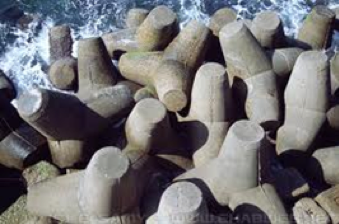 The predicted rise of the sea level, coupled with the increasing frequency of massive storms due to global warming has become a real issue for Australian coastline protection. Luckily there's a solution: Steel Furnace Slag!
The predicted rise of the sea level, coupled with the increasing frequency of massive storms due to global warming has become a real issue for Australian coastline protection. Luckily there's a solution: Steel Furnace Slag!
Read More »
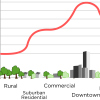
Research from the Lawrence Berkeley National Laboratory in the USA shows the use of slag in pavements and roads is seen to reduce the heat island effect suffered by a lot of metropolitan areas, due to increasing the reflectivity of the finished pavement.
Read More »
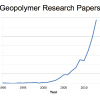
As geopolymer concrete knowledge increases, so does its interest. The increasing amount of research, technical and commercial papers being produced and published supports this view. Geopolymer concrete is becoming more widely accepted within the industry and in turn, the promotion the reduced CO2 benefits that come from displacing emission from Portland Cement.
Read More »
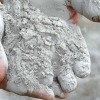
This world first Geopolymer Concrete Handbook is designed to assist engineers and users in specifying and using Geopolymer concrete with greater confidence and less risk within the industry.
Read More »
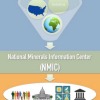
As the industry is very much aware, slag is a highly resourceful product. Hendrik G van Oss, a mineral commodity specialist for the U.S. minerals information center, agrees with this, rewarding iron and steel slag with the title of “Mineral Resource of the month” earlier this year while stating that iron and steel slags are co-products of iron and steelmaking, not waste products.
Read More »

Another four years has past, the Rio de Janeiro Olympics have come and gone and the Australian Team managed to bring home eight Gold medals, eleven Silver and ten Bronze, overall taking out 10th place. Again, punching well above our weight for our relatively small population.
Read More »

Concrete is the second most used commodity in the world and although its applications are great, its environmental impacts are distressing. With estimated 10% of all CO2 output being attributed to concrete production. there has to be an answer for this environmental conundrum.
Read More »
 All those educated about slag know that its benefits outweigh its flaws 10 to 1. To increase its use and applications it is important to share factual, positive stories about slag. Connections and Connections Selections do just that.
All those educated about slag know that its benefits outweigh its flaws 10 to 1. To increase its use and applications it is important to share factual, positive stories about slag. Connections and Connections Selections do just that.
Read More »
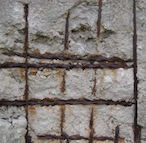
The issue of concrete cancer and erosion has become increasingly more common across Australia from the 1960’s. Since then the problem has only escalated and is now a widespread problem on Queensland’s east coast. This is because this area is prone to the three (3) major causes of Alkali-Silica Reaction (ASR) or concrete cancer.
Read More »
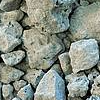 After months of meticulous editing, QRG 4 - Electric Arc Furnance Slag is live and ready to read! The 4 page publication encompasses the physical properties, applications, environmental considerations and multiple case studies.
After months of meticulous editing, QRG 4 - Electric Arc Furnance Slag is live and ready to read! The 4 page publication encompasses the physical properties, applications, environmental considerations and multiple case studies.
Read More »
 We want to know what you think about Connections and how we can improve it for you in the future. A short two minute survey is now avaliable online, we would love to hear your thoughts and ideas about future editions.
We want to know what you think about Connections and how we can improve it for you in the future. A short two minute survey is now avaliable online, we would love to hear your thoughts and ideas about future editions.
Read More »

 In the first trial of its kind, we’ve taken industrial waste from coal-fired power stations and steel manufacturing to create a new roadway. Working with researchers from the University of NSW, we’ve replaced a section of roadway on Wyndham Street in Alexandria to test the green concrete’s durability. Made from fly ash and blast furnace slag, geopolymer concrete is a sustainable blend of concrete and recycled materials.
In the first trial of its kind, we’ve taken industrial waste from coal-fired power stations and steel manufacturing to create a new roadway. Working with researchers from the University of NSW, we’ve replaced a section of roadway on Wyndham Street in Alexandria to test the green concrete’s durability. Made from fly ash and blast furnace slag, geopolymer concrete is a sustainable blend of concrete and recycled materials. The predicted rise of the sea level, coupled with the increasing frequency of massive storms due to global warming has become a real issue for Australian coastline protection. Luckily there's a solution: Steel Furnace Slag!
The predicted rise of the sea level, coupled with the increasing frequency of massive storms due to global warming has become a real issue for Australian coastline protection. Luckily there's a solution: Steel Furnace Slag!
